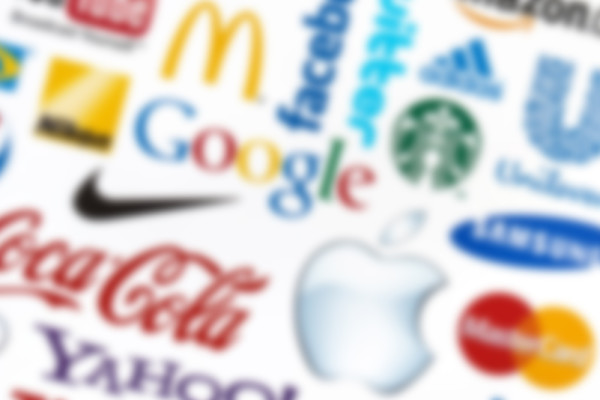A lot of people always wonder if they should rebrand.
Some companies who have had the same brand, colors, and typography since the 80’s (and it shows) probably could use a facelift; other companies seem to churn out new identities every few years.
Obviously there is a balance somewhere in between, but how do you tell? I’ll give you six easy ways to know whether or not a company rebrand should be in your immediate future.
First, let’s get some terms straight.
Some people confuse logos with branding and vice versa. While there is definitely some overlap, the two are not the same thing.
A logo is simply a distinguishing mark of a company.
A brand lives in people’s heads; it’s the idea behind a company, or what people think and feel about your business.
Now, a logo can certainly influence a brand, and can be used to your advantage. So when I say rebrand, I’m talking about the whole process: sitting down and really thinking and tweaking the vision and direction of a company, and then adjusting the supporting collateral to match. This can include, among other things, the logo, stationary, colors, fonts, website, brochures, signage, you name it. Usually when these tangible things are altered, public perception follows.
So that’s what we’re talking about when we’re asking ourselves whether or not to rebrand. It’s a big deal! Now that you know what branding is, let’s jump right in.
You should probably consider rebranding if:
1. Your current brand no longer reflects the direction of the company and/or what you’re all about.
Businesses and their owners naturally evolve and change over time. Sometimes products or services expand, sometimes they contract.
I was working with a guy who specialized in gun smithing and machining, but he wanted to specialize even more. Instead of being a jack-of-all trades shop, he wanted to narrow his focus and become more niched, as well as bring in higher-paying clients. More on that in a minute. So I helped him rebrand and refresh his logo and message to reflect that. He’s now staying super busy with the type of projects he wants, and making great profits margins.
2. You’re not attracting the sort of customers you want.
A brand can speak volumes. It tells potential customers what to expect. Think about Walmart. Their branding screams discount, so that’s the sort of people that shop there.
For contrast, think about a higher end brand, like Coach. Their branding, marketing, and shopping experience definitely say luxury. Your branding is no different.
I recently helped a family therapist out of Seattle with her rebrand. Originally she was just using those cheap Vista print business cards to get clients, and had a free website with a free “logo.” But she wasn’t happy with the quality of clientele she was landing, so I helped her recreate her brand to pull in more quality leads, and it worked. Never underestimate the power of your brand to attract the right audience.
3. Your brand is confusing to people or it isn’t resonating with your target market.
It’s important that your brand, logo, and company name are clear about what you’re offering. Don’t try to be overly confusing or clever; most people will just move on right by if something doesn’t make sense to them.
For example, a year or so ago I worked with a local plumbing company. But they went by EPS, which stood for Element Plumbing Services. Now, being in Arizona, EPS reminds me of APS, the utility company.
Also their branding was very dull, and didn’t do much to resonate with potential clients. We decided they should just go by Element Plumbing, and helped them rebrand with a more interesting logo that gets people’s attention. Instead of causing ambivalence, now their brand sparks interest.
4. Your current brand is not unique and/or is continually mistaken for one of your competitors.
The whole purpose of having a brand is to stand out in your audience’s minds.
Your brand should be distinct, unique, and memorable. If it’s not, your desired audience won’t remember you. Or worse, they’ll confuse you with your sworn enemy—your competition. The last thing you want is for a potential customer to choose to go next door because they thought they were you! I’ve made that mistake myself as a customer a couple times, mostly due to poor branding.
A good example of what not to do can be found here. Long story short, I was researching some different martial arts schools to attend. I found two, but mistook them for each other, because they had the exact same branding and website. So, in my mind as the consumer, I really didn’t see or couldn’t tell any real difference between the two. So I just went with the first one I found, by default. Don’t let that be you.
5. You don’t have much equity in your current brand, or the pros outweigh the cons.
If your business has been around for a while, you probably have some equity built up in your brand, much like house. I always tell clients to be cautious about rebranding if this is the case.
If you’ve been around for 5, 10, or 20+ years, then your current brand has some serious worth to it. Your customers are used to seeing it the way it is. Suddenly changing without good reason can cause you to lose all that.
On the flipside, if you haven’t around that long, you don’t have much to lose, and can rebrand with less risk.
But just because you’ve had the same logo for 30 years doesn’t mean you shouldn’t risk rebranding. If you have a lot of good reasons, like the ones I’m listing in this article, and you feel that overall, a rebrand is the smart move, you should probably make it.
I recently rebranded myself a year back.
I used to go by my name, so I was just Sheila Patterson Design. For a variety of reasons I decided it needed a change.
For one, I wasn’t drawing in the sort of clients I wanted; two, the name and brand weren’t very unique (a lot of designers just go by “their name design”). And finally, I wanted to change the direction of my company. Making the change was difficult, because I had so much equity already in my name. I’ve been around a few years, had built recognition, and had great SEO. Rebranding put me back at square one, but I was able to build back up again. It took a year to regain that momentum, but I’m glad I made the change.
6. You are embarrassed by (or hate!) your current branding.
The best, and easiest, reason to rebrand is simply personal preference. If you’d had your identity for a while, and it still isn’t sticking, it might be time to move on.
This is typical of companies that perhaps started with a shoestring budget. They needed a logo and a brand real quick, and affordable, so went with the cheapest option they could find. This might hold you off for a year or two, but once your company gains some steam, you might think twice about your current branding.
Does your face turn red every time you hand out your business card, or guide clients to your website? Having less than positive feelings towards your brand is a telltale sign it might be time for a rebrand.
I had a client like this not too long ago. She was an entrepreneur starting up a new company, and had hired out one of those online design contests to design her logo and business card for $300 (article coming soon about the dangers of online contests!). She was less than happy with the results, and in fact, felt pretty embarrassed by them. She knew she wouldn’t be taken seriously if she kept that branding. So she hired me to fix it. The investment was much more substantial, but she got real results she could be proud of.
What about you?
Do you think it’s time for a rebrand? How do you tell when your logo or identity needs a refresh? Do you have any good rebranding stories to share?





2 Comments. Leave new
Thanks for sharing, Sheila. Love this bit:
“A brand lives in people’s heads; it’s the idea behind a company, or what people think and feel about your business.”
Spot on. A logo and a brand are definitely not the same thing.
Hi Crissy, thanks for reading! Ain’t that the truth 🙂